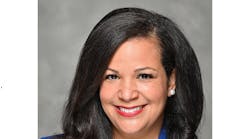Compared with similar school systems, the Los Angeles Unified School District spends more on teachers’ pay and health benefits and less on activities that could enhance student learning, according to a report by an outside task force.
The Los Angeles Times reports that the L.A. Unified School District Advisory Task Force did not make specific recommendations, but instead posed a series of questions that district leaders needs to answer to make sure funding is aimed at providing an opportunity for all students to succeed.
"Structural changes will need to be made to financially sustain L.A. Unified, and investments in student learning must be increased to begin to show progress for all students," the report asserts.
Austin Beutner, who was appointed as district superintendent last month, was a co-leader of the task force prior to taking the superintendent's job.
Some of the task force's conclusions, including those about salaries and benefits, are likely to be met with skepticism by unions and others.
The report, titled “Hard Choices,” is based largely on the work of consultants.
Some key findings about overall district finances are consistent with earlier analyses by the district and a previous independent review. The most pressing concern is a budget deficit that in about three years would force sharp cuts in programs and jobs unless the district takes steps to prevent them.
The heart of the report is a comparison of Los Angeles Unified to school districts in Oakland, Cleveland, Baltimore, Denver, Palm Beach County, Fla., and Shelby County, Tenn. Those districts are much smaller the Los Angeles, which is the nation's second largest, but the comparison group was put together based on factors such as the similar percentages of students who are learning English and qualify for free or subsidized school lunches.
The report concludes that, compared with the “peer districts,” L.A. Unified:
- Devotes fewer resources to middle schools.
- Provides less instructional time for students, and less focus on math and English instruction in particular.
- Offers teachers less time for collaboration and meaningful training.
- Spends more on administrators, but gives teachers less instructional coaching.
The task force also raised concerns about the fact that most L.A. principals remain at their schools for two years or less.
L.A. Unified has disputed assertions that it has too many administrators, saying that the state misclassifies some of its employees, including counselors assigned to help schools reduce the number of student suspensions.
Making teachers work longer would require contract concessions or increased pay. Several issues raised by the task force, including salaries and benefits, are covered by labor contracts.
The task force concluded that the district’s average teacher salary is 17 percent above the median of the comparison districts and that its average healthcare benefits cost is 44 percent above the median, when adjusted for the cost of living.
The report did not consider the extent to which pay levels are affected by L.A. Unified’s older workforce. Salary structures for teachers in most public school systems are based heavily on experience.
The task force says some of the higher pay in Los Angeles results from raises teachers can earn by taking coursework or attending seminars. The consultants say this practice costs the district about $150 million in higher salaries, and they contend some of the training has a tenuous link to improving teaching.


